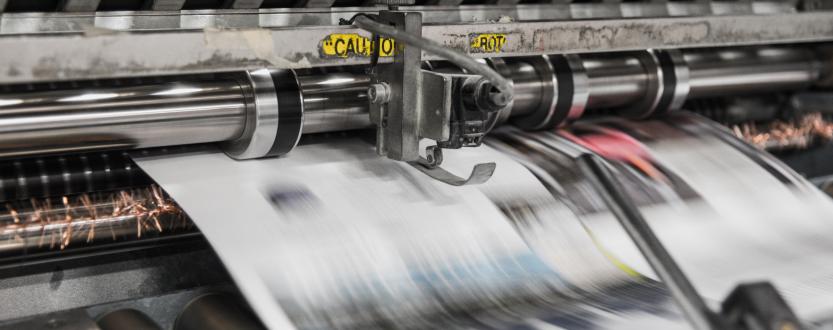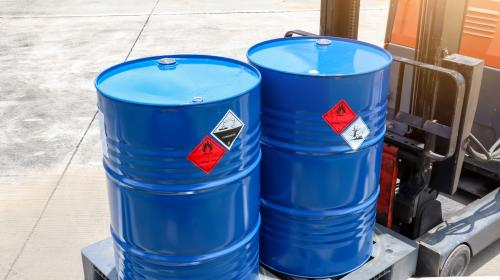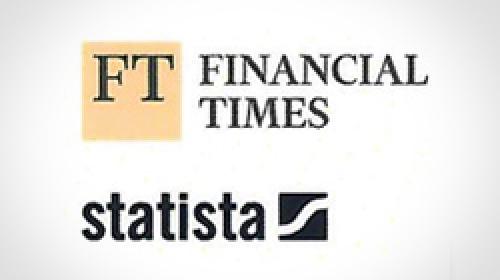Waste Management In The Printing Industry
If you work in printing, you know that as a screen printer, lithographer, flexographer, or any other printer, the Resource Conservation and Recovery Act (RCRA) regulations are in place to protect your business, employee safety, and the environment from hazardous waste at your facility. Whether you are a small, medium, or large quantity generator, you need to understand waste management in the printing industry thoroughly, and know RCRA regulations require you to follow certain procedures when generating, storing, transporting, treating, or disposing of hazardous waste. But the way you handle your printing product along its lifecycle and the ways to reduce your regulatory burden may not always be obvious. There are strategies you can use to minimize or reduce your waste, which may bump you into a lower generator category, and you may have overlooked recycling opportunities that could save you money.
Process 1: If your business uses ink in lithography, letterpress, screen printing, flexography, and gravure.
- Wastes Generated: Possible wastes associated with this process include printer ink waste with chromium, barium, and lead content; and waste ink contaminated with cleaning solvents, such as trichloroethylene, methylene chloride, 1,1,1-trichloroethane, carbon tetrachloride, 1,1,2-trichloroethane, 1,2,3-trifluoroethane, chlorobenzene, xylene, acetone, methanol, methyl ethyl ketone (MEK), toluene, carbon disulfide, or benzene.
- What are some recycling opportunities that can help protect the environment and human health? If you are not in need of high-quality black ink but a lower quality will suffice (newspaper print, for example), consider recycling inks to create black ink. You may also safely dispose of printer ink waste by sending them to a fuel blending service that combines these and other wastes for burning. Of course, in any process, if you are sending waste offsite, you should consider using a registered hazardous waste transporter, such as Enviro-Safe Resource Recovery.
- How can your business minimize its hazardous waste during this process? Running similar print jobs simultaneously or dedicating presses to certain colors will help reduce cleanings. Another way to reduce cleanings is to only clean ink fountains or change colors when the ink is at risk of drying. When cleaning is necessary, use organic solvent alternatives when possible. It is always a good idea to keep printer ink waste that has been contaminated with hazardous cleaning solvents separate from noncontaminated printer ink waste.
Process 2: If your business deals with plate processing.
- Wastes Generated: Acid plate etching chemicals for metallic lithographic plates, and flexographic photopolymer plates.
- What are some recycling opportunities that can help protect the environment and human health? It is possible to neutralize waste acid on-site in an exempt elementary neutralization unit. If you are unsure whether this is possible for your business, contact our experts at Enviro-Safe.
- How can your business minimize its hazardous waste during this process? Check with your state and local regulatory agencies about using alternative plate solvents that may not be considered hazardous.
Process 3: If your business develops negatives and prints, such as photography businesses.
- Wastes Generated: Waste photochemical solutions from fixer and rinsewater and from alkaline or acid process baths.
- What are some recycling opportunities that can help protect the environment and human health? Similar to plate processing, you can neutralize waste on-site with an exempt elementary neutralization unit when developing negatives and prints, too. You may also recover silver from fixing baths using chemical recovery cartridges, electrolytic recovery cells, or ion exchange resins. As in any process, be sure to use a licensed transporter you trust, which is especially important when dealing with silver waste. See our post on how to find a reliable transporter here.
- How can your business minimize its hazardous waste during this process? Reducing the amount of silver waste you produce by finding silver-free film alternatives (acicular, diazo, and electrostatic are some common examples) is one of the biggest ways you can reduce the hazardous waste generation in this process. You can also add ammonium thiosulfate to silver-contaminated baths to extend their buildup. Regarding baths, use an acid stop bath before fixing the bath to reduce the effect of alkaline developer on the pH. Use countercurrent instead of parallel rinse techniques, and remember to containerize process baths and avoid spoiling.
Process 4: For businesses that clean printing equipment and machinery.
- Wastes Generated: Spent organic solvents, which might include: trichloroethylene, methylene chloride, 1,1,1- trichloroethane, carbon tetrachloride, 1,1,2-trichloroethane, 1,2,3-trifluoroethane, chlorobenzene, xylene, acetone, methanol, MEK, toluene, carbon disulfide, or benzene.
- What are some recycling opportunities that can help protect the environment and human health? Enviro-Safe Resource Recovery is a leader in sustainable programs, which can help keep your spent solvents from being regulated. This ultimately lowers your liabilities, conserves valuable resources, and provides social and economic benefits. Our experts can coach you in ways to reduce, reuse or recycle your solvents throughout this process, including reusing some of your spent solvents on-site! In addition to these strategies, consider finding the right techniques for managing rags and disposable wipers contaminated with solvents. You may decide to launder them after wringing out excess solvents, treating them to recover solvents, or treating them as hazardous waste. For help with your solvents, contact us today.
- How can your business minimize its hazardous waste during this process? Consider using organic solvents when possible. Additionally, altering the way you print (by dedicating presses to certain colors, running similar jobs at once, or printing lighter colors first) can minimize the amount of cleaning you must do. Also, wipe surfaces prior to applying solvents for washing.
Process 5: For any general printing Processes.
- Wastes Generated: Unused inks, solvents, and other chemicals used in the printing industry.
- What are some recycling opportunities that can help protect the environment and human health? Many of these are covered in the other processes but contact Enviro-Safe for specific questions about your specific printing process and materials. Our experts work closely with you to find solutions that are a perfect fit for your business.
- How can your business minimize its hazardous waste during this process? Avoid overstocking on inks, solvents and cleaning materials, or other printing chemicals to reduce your regulatory burden.
In this post, we introduced recycling opportunities for common processes for businesses that work in printing, which could significantly reduce your regulatory burden and your costs. Of course, always check your state and local requirements for managing your hazardous waste, which may be more stringent than federal standards.
Contact us for more information regarding our full line of environmental services



